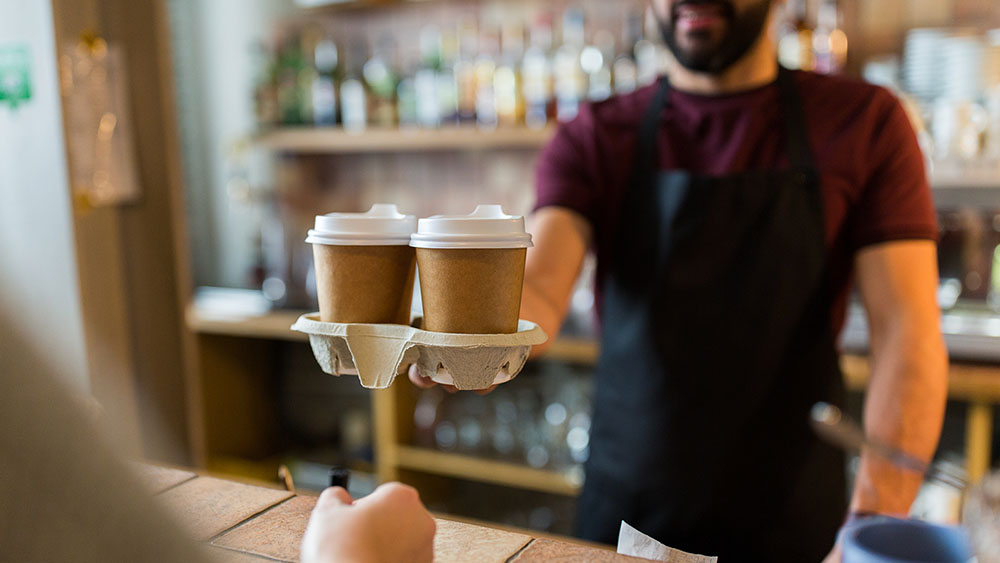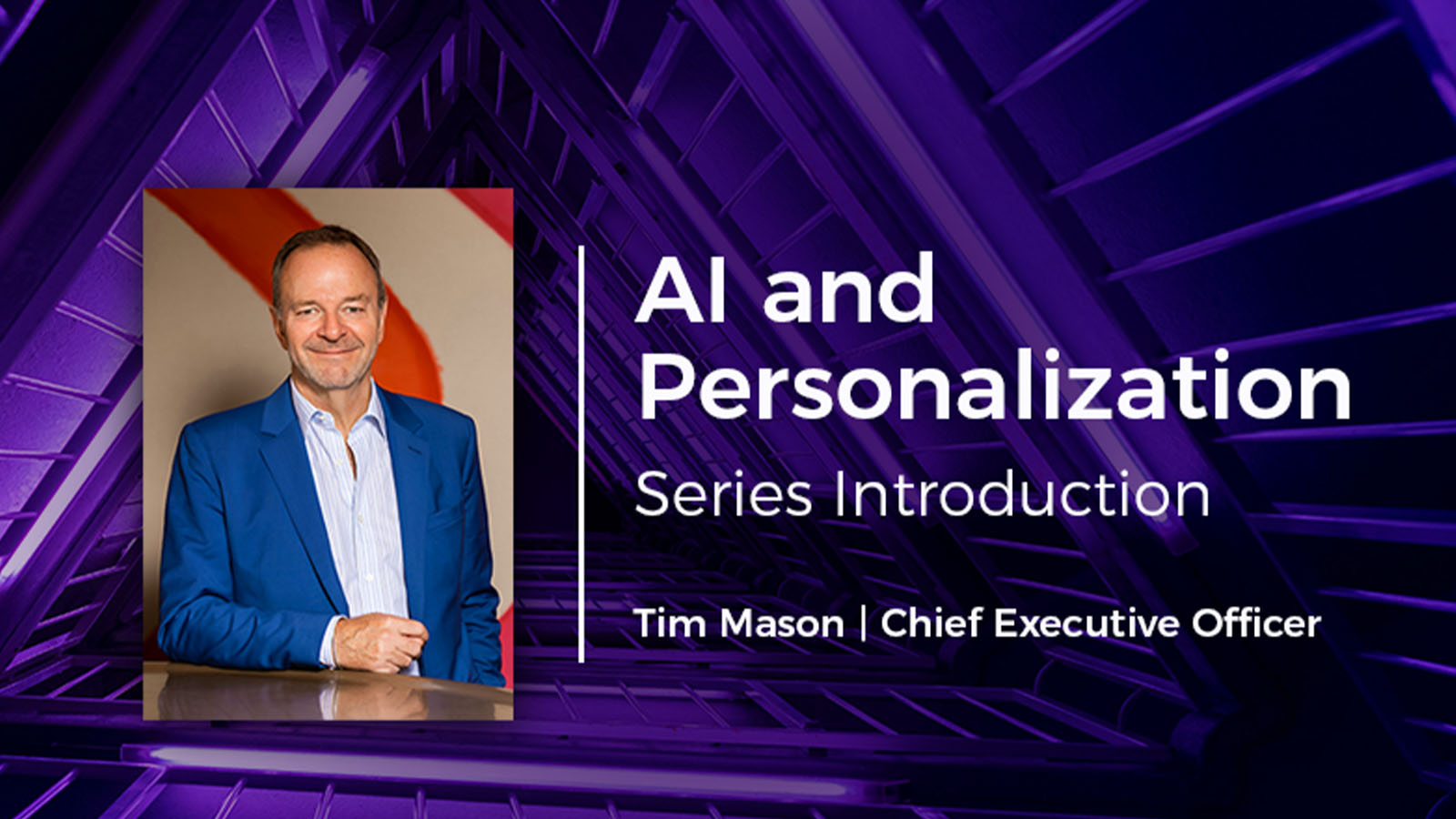9 min read
AI & Personalization: A Series
A series exploring the relationship between AI and personalization in the retail sector, introduced by Eagle Eye CEO Tim Mason
Get the latest insights, research and news delivered straight to your inbox.
Plus, enter to win the 2nd edition of Omnichannel Retail by Tim Mason & Sarah Jarvis!
No spam. We promise. 💜
Featured Case Study:
See how Eagle Eye helped Giant Eagle relaunch myPerks, delivering 25M+ personalized offers monthly and boosting loyalty program ROI.
Contact us to find out how we can enable your teams on our platform.

3 min read
 Al Henderson
on
2 October, 2020
Al Henderson
on
2 October, 2020

Pret’s in-store coffee subscription service, YourPret Barista, is an industry first, but there is no reason why every brand shouldn’t be thinking about how the model might work for their business. We explore how subscriptions can work for other sectors within hospitality and the greater retail sector.
Now more than ever, finding new and innovative ways to drive frequency of visit and customer loyalty will be the difference between surviving or thriving. I was struck by CGA’s recent consumer stats following the Government’s announcement of curfew restrictions; two in five (40%) respondents said they will go out less often as a result of the measures – nearly three times as many as those who will go out more frequently. It lays bare one of the big challenges facing the sector.
There has been a good deal of comment in recent weeks about Pret’s game-changing in-store coffee subscription service, YourPret Barista. For us, it goes without saying (but I’ll say it anyway!) that we at Eagle Eye are extremely proud to have helped one of the sector’s standout operators develop and launch this digital initiative. When they approached us about plans for this new service it was a real thrill as, for several years now, I’ve felt that subscription, whether it’s a high frequency or habitual occasion, offers a massive opportunity for brands within the hospitality sector.
Someone commented to me the other day that we increasingly live in a subscription economy; in my world, it’s Netflix, Pasta Evangelists, Peloton, and Psycle, so why would coffee be any different? Where Pret has trodden, others in the sector will now surely follow. They have a first-mover advantage, but there is no reason why every brand shouldn’t be thinking about how the model might work for their business. Of course, you’d expect me to agree and, looking to the future, personally, I would love it if, for example, All Bar One offered a subscription for cocktails or Nando's for chicken and fries.
The ability to tie sales analysis to a single view of where and who your most frequent customers are will mean businesses begin to develop new and increasingly sophisticated ways of fostering greater loyalty during these uncertain times. This is where you need to ask yourself, ‘How much do we really know about our customers'? We should all be motivated to understand more about those who visit our venues in order to turn anonymous consumers into known customers.
You would have heard the phrase that “data is the new oil”. It’s a simple comparison to make; just like oil, raw data isn’t valuable when unrefined; the value is generated when it is gathered accurately and timely and connected to other relevant data. When properly refined, it then quickly becomes a vital decision-making tool, providing a range of actionable insights to help you better understand customers, learn more about their habits and ultimately deliver a more personalized experience.
Before the pandemic, some of our casual dining clients estimated customer frequency at around one visit every 12 weeks. However, tracking this was difficult to do without the ability to tie sales to customer identities. Operators typically only capture the data of only a fraction of their footfall, meaning that assumptions around frequency and recency are exactly that – assumptions. Imagine how powerful accurately knowing this could be, along with what individual customers ordered most often and how much they spend. Delivery aggregators, such as the likes of Deliveroo and Just Eat, have just exacerbated the problem, gaining huge volumes of customer data just by virtue of knowing who each one is online. So the customer visiting your venue once every 12 weeks could be hugely loyal, ordering via a delivery service twice a week, you just wouldn’t know it.
The retail and grocery sectors own the omnichannel customer. They know who we are whether the purchase is in-store or online. Hospitality is traditionally an in-venue experience only, so there hasn’t been an omni or multichannel experience – until relatively recently. Operators are starting to move online but haven’t embraced technology at any meaningful pace. Take order and payment and click & collect – these services have been around for several years but are only starting to gain traction now. It’s taken COVID-19 for everyone to grasp the opportunity and become adopters.
Gathering more data means greater personalization and, in theory, more engaged customers and increased frequency and spend. This should spell the death knell for blanket, mass-market promotions and a new age of targeted, granular campaigns specific to what appeals to each customer segment – all of which positively impact sales in the long term. It enables clever personalization as, in the Pret example, they know whether I’m ordering a decaf coffee or a frappe, or a smoothie and how often. Then, mapping this trend over time it generates the insight that I tend not to drink caffeine, so what other relevant products might I be interested in purchasing? In the grocery world, this level of customer insight has been in play for years.
So, while data may well be the new oil, like oil, it requires extracting, refinement, and consolidation. Done in the right way, in light of the ongoing uncertainty the sector faces, data can fuel greater personalization and customer engagement to help capture next-generation loyalty.
This article first appeared in the Propel Friday Opinion email.
Get the latest insights, research, and news delivered straight to your inbox.
Plus, enter to win the 2nd edition of Omnichannel Retail by Tim Mason & Sarah Jarvis!
No spam. We promise. 💜

9 min read
A series exploring the relationship between AI and personalization in the retail sector, introduced by Eagle Eye CEO Tim Mason

1 min read
Discover how retail subscription models drive loyalty, personalization, and lifetime value—moving beyond revenue to build deeper customer relationships.

4 min read
How Liberty London used Eagle Eye AIR to launch a subscription-based loyalty experience for high-value engagement and growth.